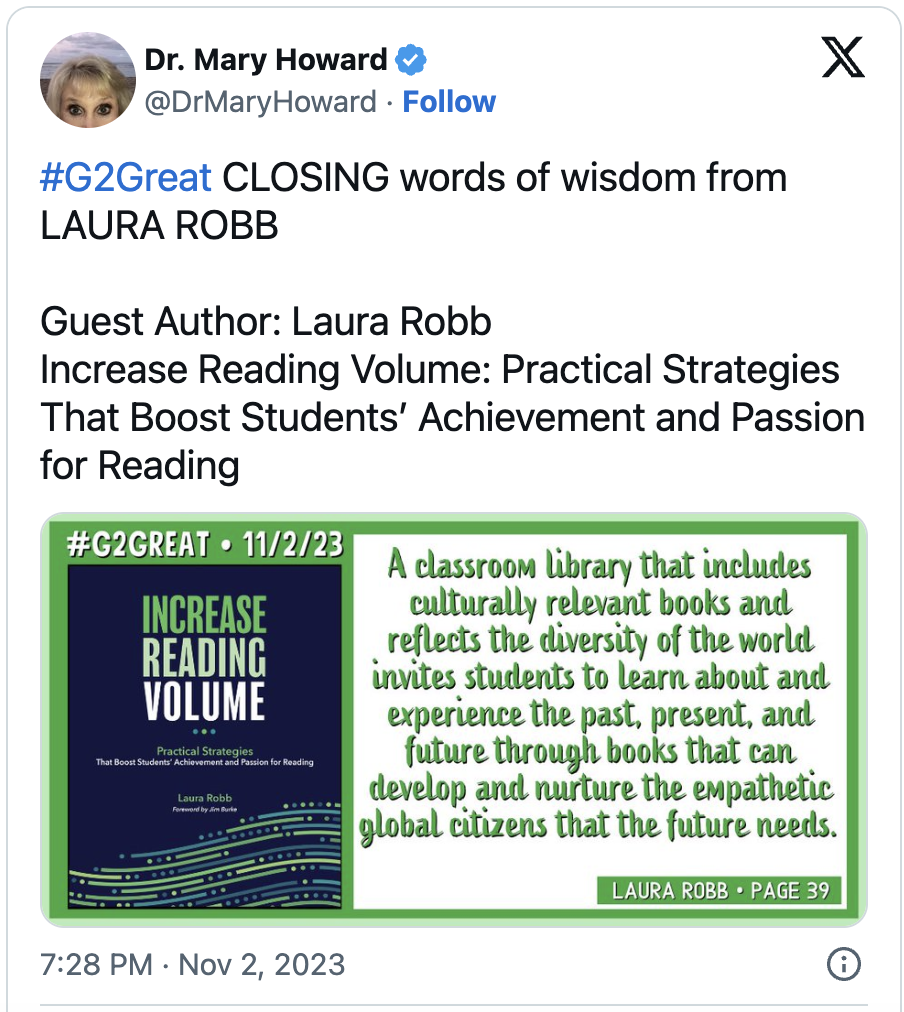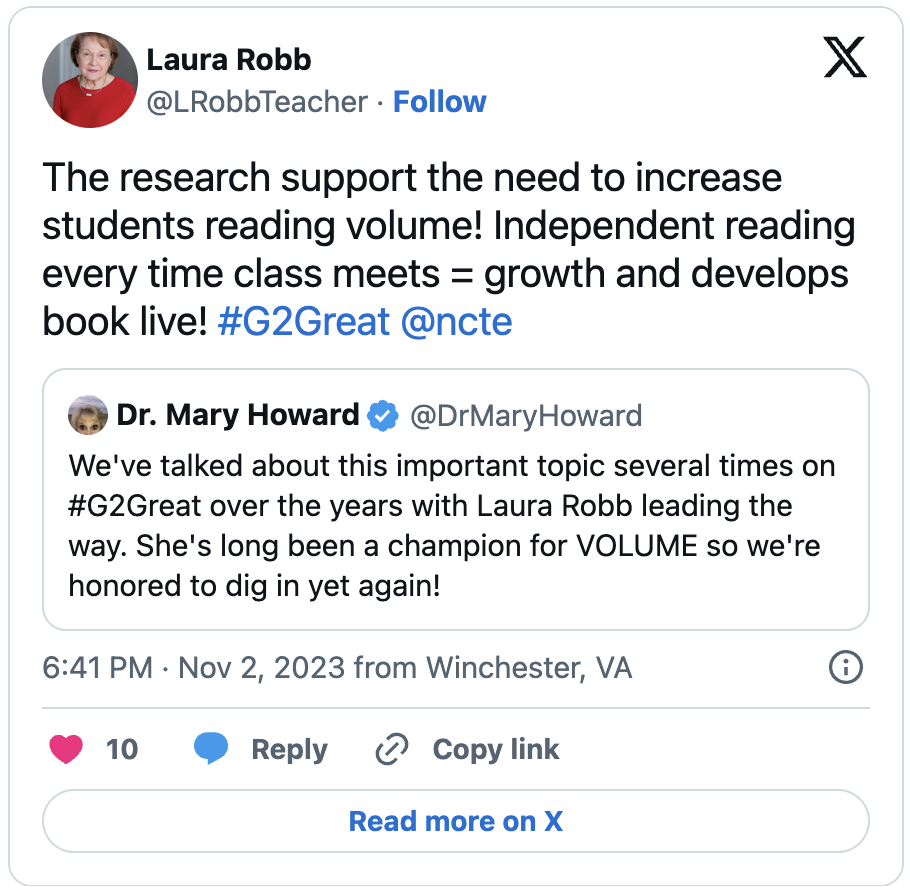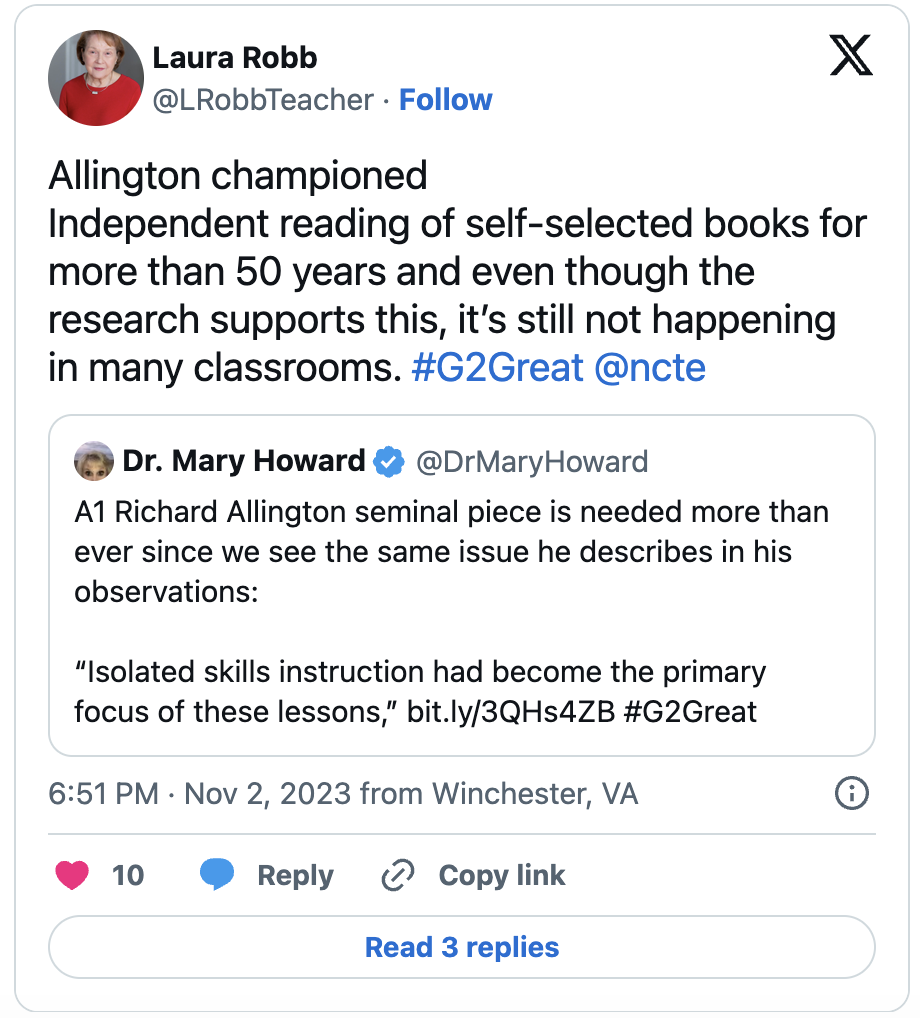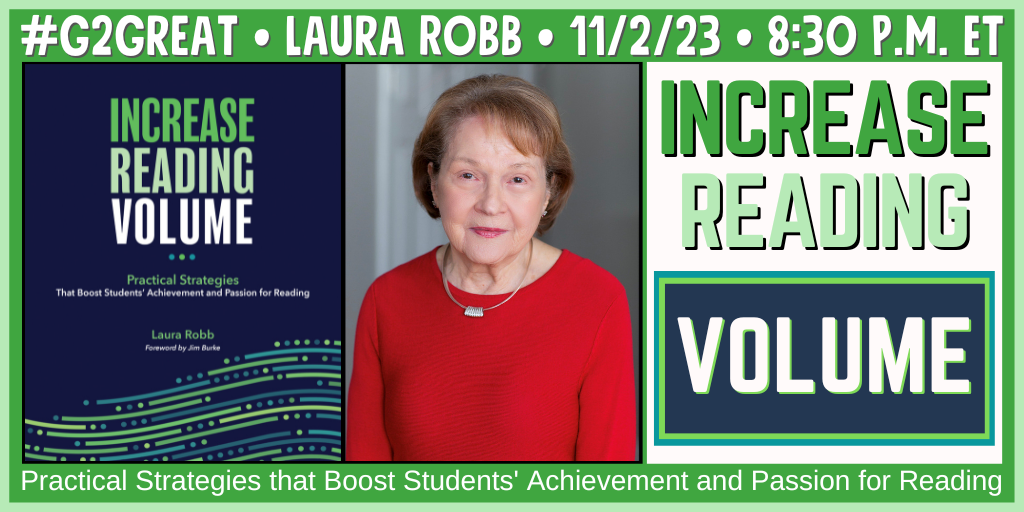
By Brent Gilson
This past month the #G2Great community was brought together to discuss Laura Robb’s new book Increase Reading Volume: Practical Strategies That Boost Student’s Achievement and Passion for Reading. We are so grateful that Laura was able to join us and share her knowledge and experience.
I love the chance to talk about reading and how we can get students to read more. When I started teaching, I was introduced to independent choice reading as part of my “Daily 5” model. As I moved to later grades, the model of my literacy periods shifted, however, the mainstay has always been Independent reading.
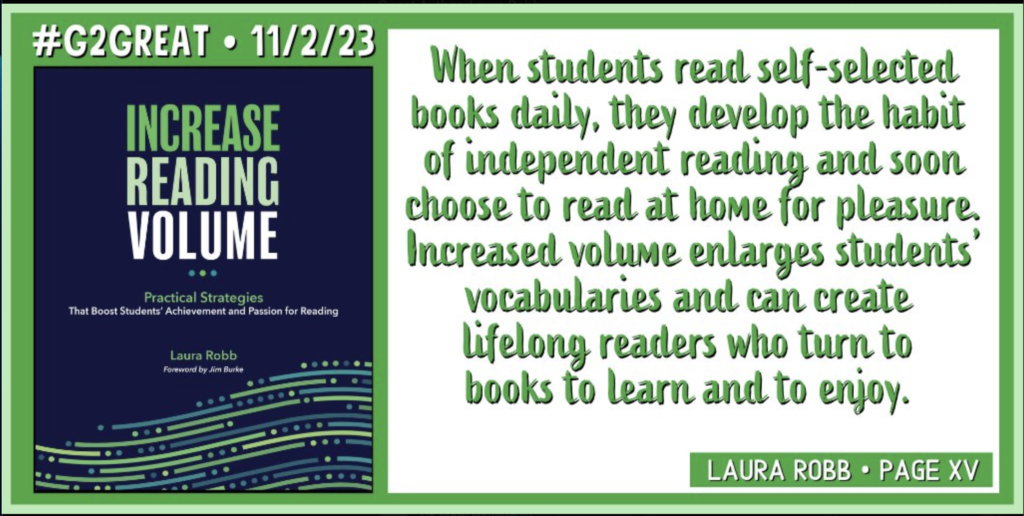
Looking at the most impactful moves I have made in my classroom regarding reading, the first has always been choice. I work to talk about books, to get kids excited about books, but I want always to make sure I honor their choices as readers, that I recognize their identity as a person and also as a reader who knows what they like. Too often, I think kids hear, “You are too old for this” or “Graphic Novels are not real books. Choose something else.” I can’t help but think that if a kid is reading anything, that is better than reading nothing. One year I had a student, a hunter, reading a book about knife-making. He was absolutely engrossed in every class as he learned how to craft his own hunting knife. I guess I could have bugged him to read something else. Maybe offered him Hatchet for the millionth time because there were not a lot of books he was interested in reading, but instead, I let him read and inevitably write about what interested him. Looking back at the above quote, he turned to books to learn, and he most certainly enjoyed it. This story is just one of countless stories from the classroom where readers were found and found themselves.
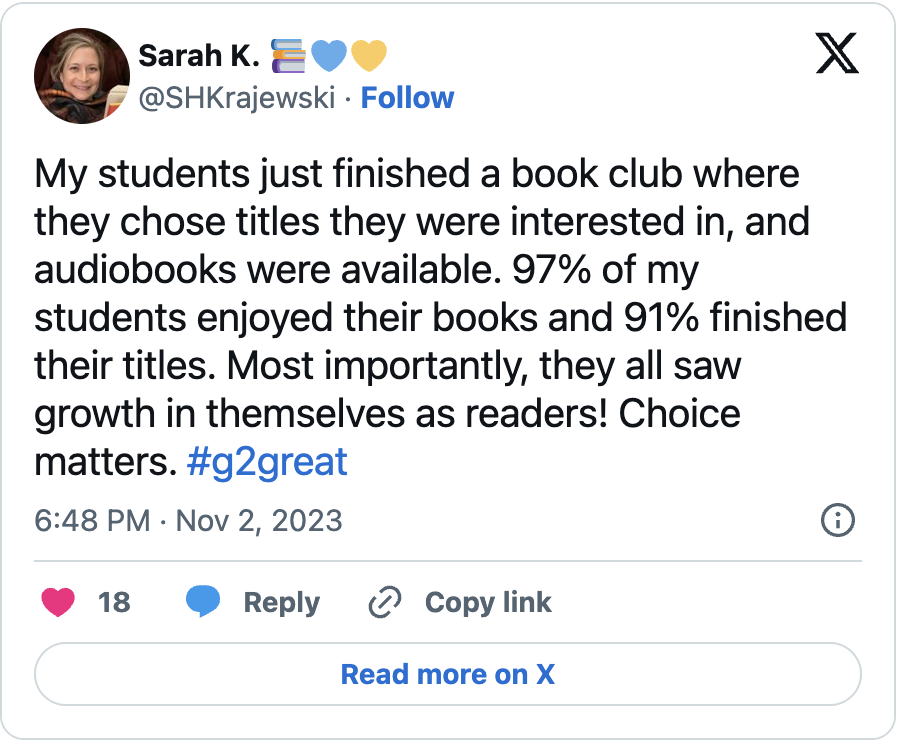
Choice in the classroom is such a powerful tool. It empowers our students; it shows them that we believe their voice matters. As Sarah points out, this empowerment leads to progress and growth.
Laura shares with readers the ideas of Dr. Rudine Sims Bishop and the power of texts to serve as Mirrors, Windows, and Sliding Glass Doors. This is still, at times, a struggle to convince many educators that texts that serve as mirrors for students are essential. We find ourselves arguing about the literary merits and that time spent on classroom reading should only be for “worthy” texts; I wonder, though, what is more worthy than a text that helps students see themselves?
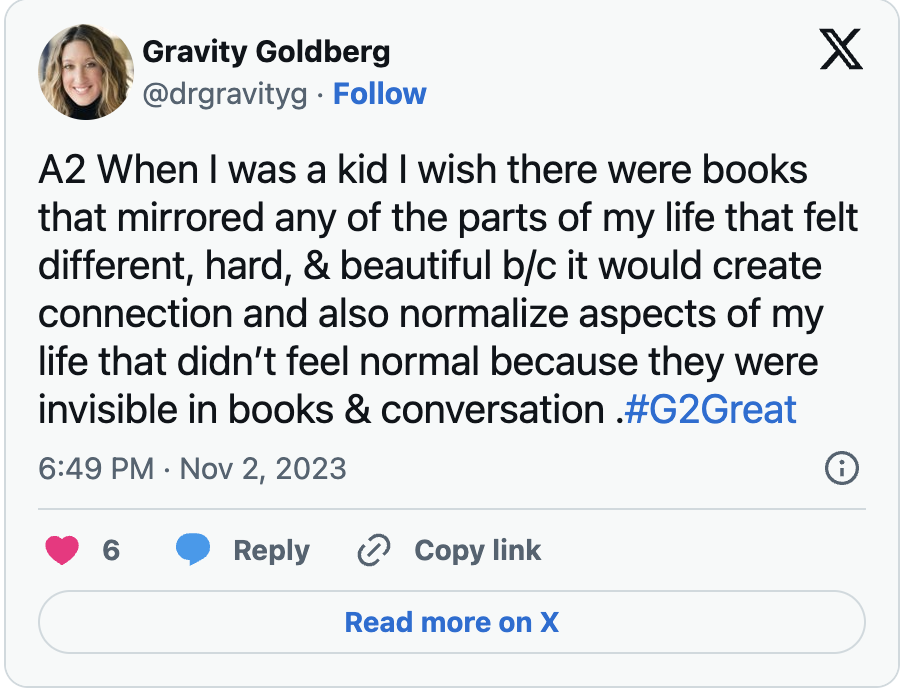
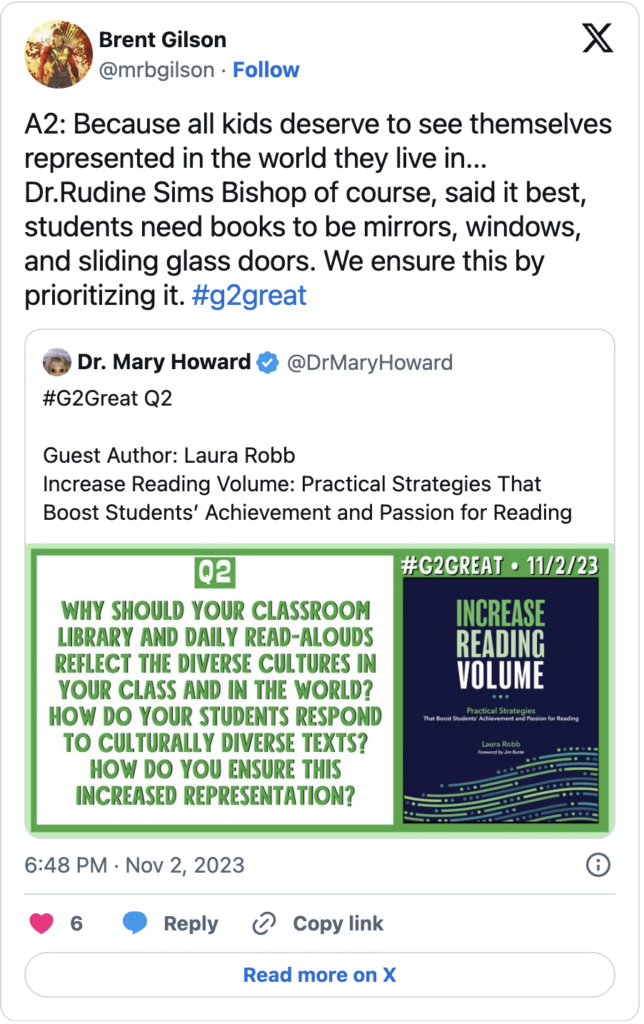
An often-mentioned statement by well-meaning gym teachers turned Administrators who have never been literacy instructors is, “How do you assess independent reading?” I love Mary’s reflection on this topic.

Sadly, we place so much importance on numbers that we often lose focus on what matters: the readers in front of us. In a time when some folks scream about nothing more than data, we need to remember the heart of this work we are blessed to do. The part we play in helping readers find themselves not some level or number grade but WHO they are as readers. That is discovered in the discussions, in the connections.
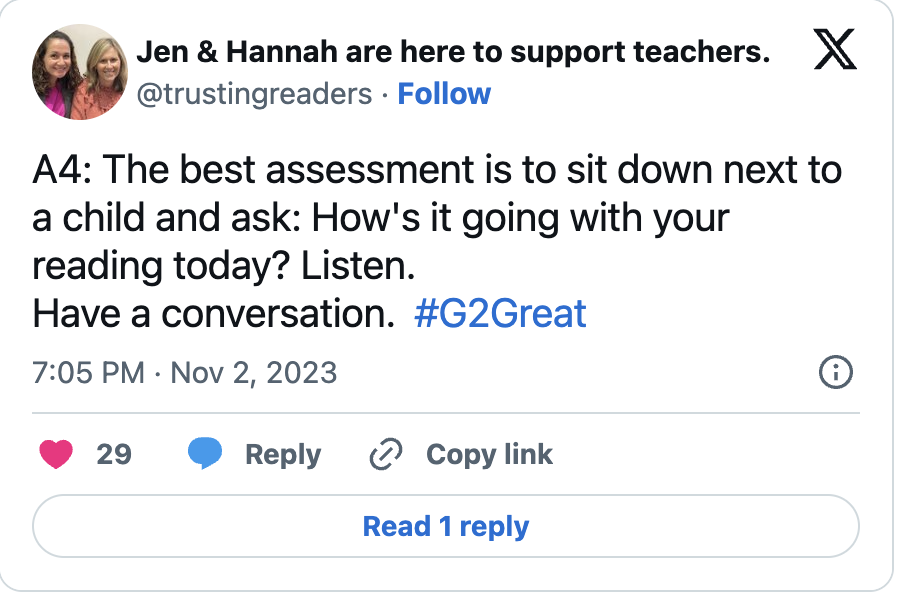
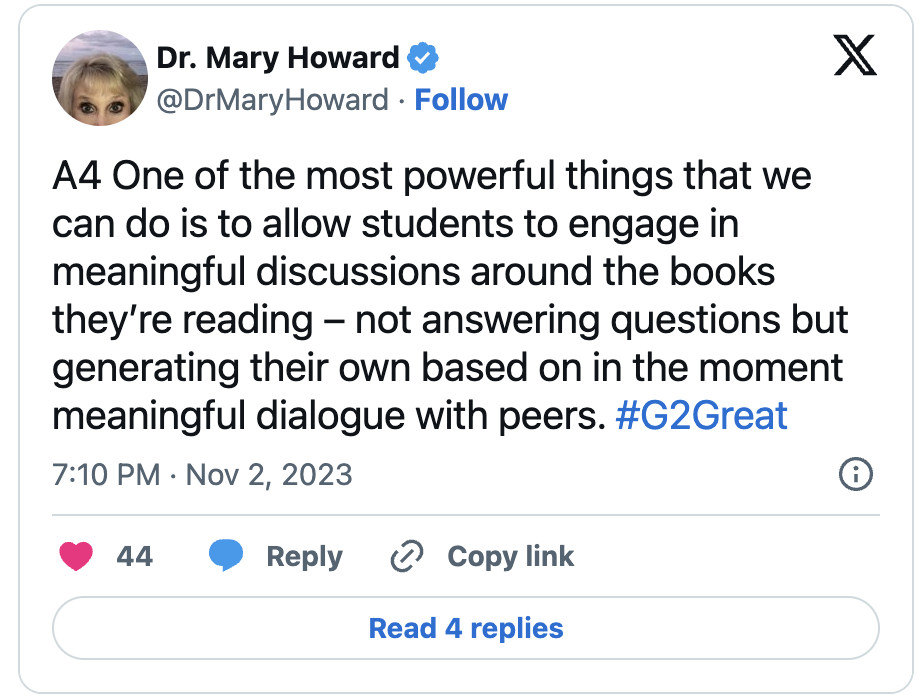
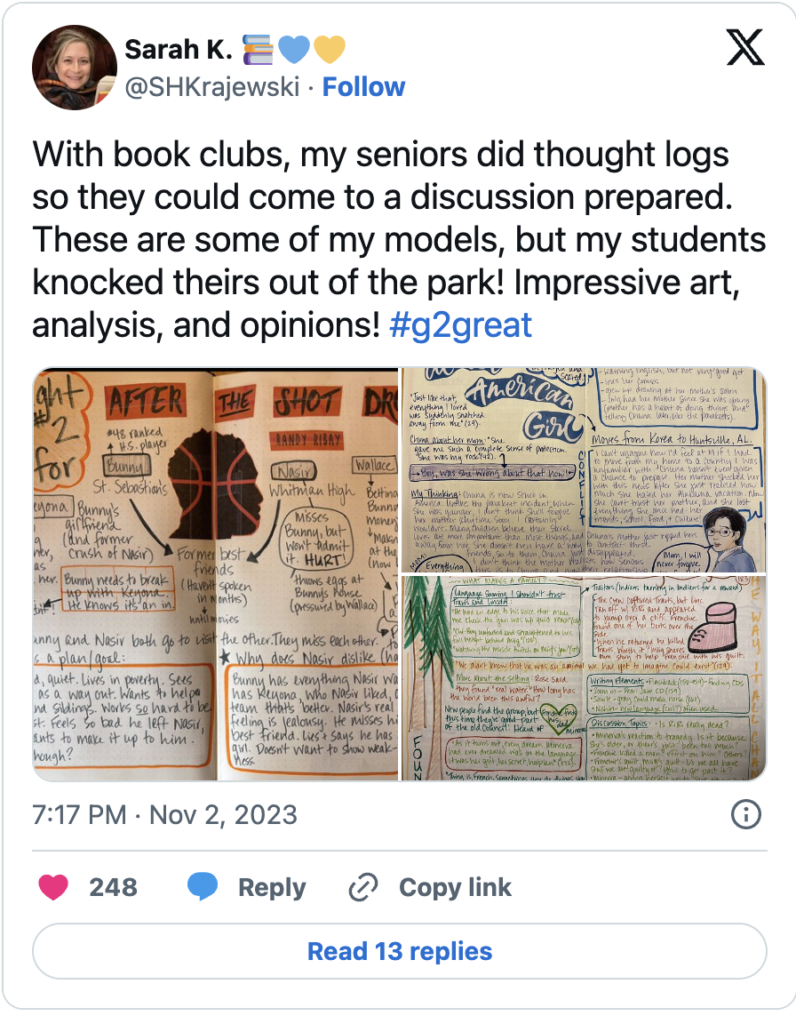
Considering assessment, I think about the work the readers of Room 157 do, the multimodal exploration of text, and the synthesis of big ideas. This thinking is inspired by the choice of texts my students and Sarah’s (pictured above) explore in the time we provide them. If we are looking to help students develop themselves as readers, we need to carve out the time in the day for them to build those habits. Kids are over-scheduled. Some have extra-curricular activities, others have home responsibilities, and others have both. Some have no access to texts at home, but they do in our classrooms. If we want to increase volume, we must show students we value it. Provide students the time to read and choice in what they are reading, and largely they will find themselves, and the volume will increase. It is really that simple.
